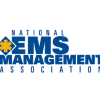More stroke victims transported to hospital by ambulance
Two out of three patients having strokes are transported to the hospital by EMS, finds an analysis of data on 204,000 stroke patients admitted from 2003 to 2010 to 1,563 hospitals participating in the American Heart Association/American Stroke Association’s Get With the Guidelines–Stroke program. That’s an improvement over a decade ago, when only about one-half of patients arrived by ambulance—but it’s still too low, according to researchers from Meharry Medical College in Nashville and colleagues.
EMS transport was independently associated with getting to the hospital more quickly and receiving treatment sooner, the researchers report. In other findings:
- EMS transported 79% of those who got to the hospital within two hours of the start of symptoms.
- Almost 61% of people transported by EMS got to the hospital within three hours of the first symptoms, compared to 40% who didn’t use EMS.
- Almost 55% who used EMS had a brain scan within 25 minutes of hospital arrival, compared to 36% who didn’t use EMS.
- Of patients eligible for a clot-busting drug, 67% using EMS received it within three hours of symptom onset, compared to 44% who didn’t use EMS.
“EMS are able to give the hospital a heads up, and that grabs the attention of the emergency room staff to be ready to act as soon as the patient arrives,” said Jeffrey L. Saver, M.D., senior study author and director of the UCLA Comprehensive Stroke Center, in an American Heart Association news release. “The ambulance crew also knows which hospitals in the area have qualified stroke centers. Patients don’t lose time going to one hospital only to be referred to another that can provide more advanced care if needed, whether that’s drugs to bust up the clot or device procedures to remove it.”
Researchers credit public education campaigns with raising awareness about stroke symptoms and the importance of timely thrombolytic treatment, or the “time is brain” concept. Older patients, those with Medicaid and Medicare, and those with severe stroke were more likely to activate EMS. Minorities and patients in rural communities were comparatively less likely. Education campaigns should target those groups specifically, according to the study, which was published online April 29 in Circulation: Cardiovascular Quality and Outcomes.
Extreme temperatures slow EMS response
Very cold and very hot days are associated with longer response times, a study out of England finds. Researchers reviewed call volume and average response times, and then correlated those with weather conditions, for the ambulance service covering the Birmingham metropolitan area over a five-year period from 2007 to 2011. The ambulance service is part of British National Health Services, which has a response time target of eight minutes or less for 75% of emergency calls. Among the findings:
- Every 1° C (1.8° F) drop in temperature was associated with a 1.3% drop in performance.
- In December 2010, the coldest December on record in more than a century, the response time target fell below 50% three days in a row, with a mean response time of 15 minutes.
- The mean daily call volume was 20% higher in December 2010 than November 2010, a milder month.
Researchers also noted that heat waves are associated with slowed response times, pointing out that during the heat wave of August 2003, emergency calls spiked by 35%. “There is an inverse U-shaped relationship between daily mean temperature and the percentage of calls achieved within 8 minutes,” researchers from the Health Protection Agency in Oxfordshire wrote. “Both hot and cold weather can cause significant delay problems for the ambulance service.”
The study was published online Feb. 27 in Emergency Medicine Journal.
Benefits of long backboards unproved: EMS Physicians Group
The benefits of long backboards to immobilize the spine are “largely unproven,” and using the devices can induce pain and agitation and compromise breathing, according to a new position statement by the National Association of EMS Physicians and the American College of Surgeons Committee on Trauma.
Long backboards should be used sparingly and avoided in those with normal consciousness, no spine tenderness or anatomic abnormality, no neurological complaints, no intoxication and no distracting injury. Appropriate use of backboards may include patients with:
- Blunt trauma and altered level of consciousness
- Spinal pain or tenderness
- Neurologic complaints such as numbness or weakness
- Anatomic deformity of the spine
- High-energy mechanism of injury and drug or alcohol intoxication, inability to communicate or a distracting injury
The complete position statement is in the July–September issue of Prehospital Emergency Care












